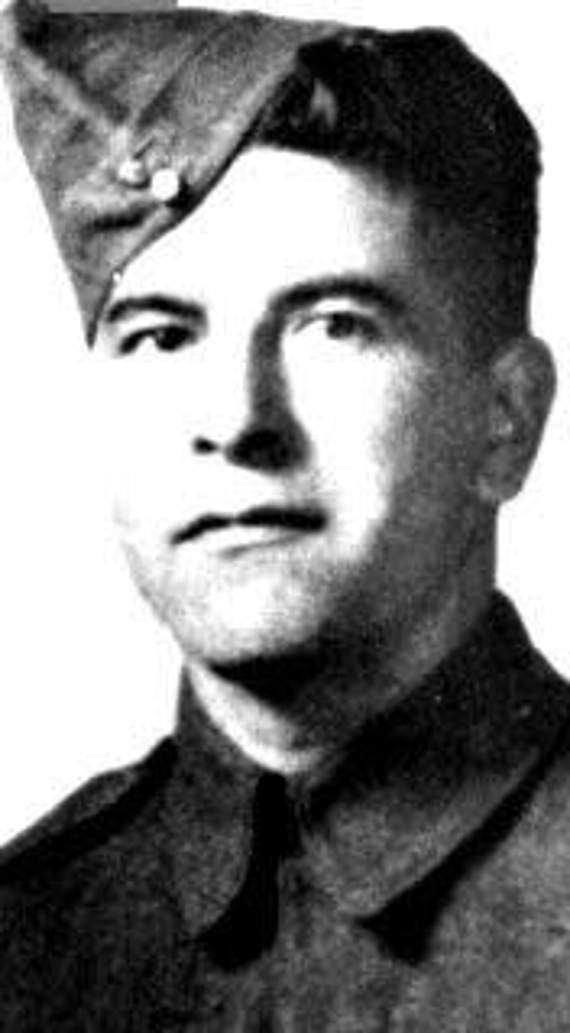LAST week marked the 75th anniversary of one of the darkest stories in the Herald’s history - the gruesome ‘wigwam’ murder which took place on Hankley Common near Elstead in 1942.
Amid news of a royal visit to Waverley Abbey and RAF appeals for ‘men of 42 and over’ to volunteer as ground crew, on October 10, 1942, The Herald also reported that “the police are investigating the suspected murder of a woman whose body has been found buried among the trees on Hankley Down”.
The remains were discovered accidentally “in the sandy soil on a lonely part of Hankley Down” by a Royal Marine on military digging operations when he saw a woman’s arm protruding from the ground. After then finding her foot the marines realised they had stumbled upon a shallow grave.
The body, believed to be that of “a young woman between 17 and 20”, was badly decomposed with much of the soft tissue having been eaten by maggots, and was estimated to have been there “for a period of a month or two” when examined, placing the date of the murder around mid-September.
A week later, on October 17, 1942, The Herald again reported that Scotland Yard detectives had been called in to investigate, and a number of residents in Elstead had been interviewed in connection with the “assumed murder”.
It added: “One theory is that the woman was a stranger to the district and had been living rough in the neighbourhood.”
The victim was eventually identified, reported The Herald on October 24, 1942, as missing 19-year-old Joan Pearl Wolfe after personal belongings including an elephant charm were identified by her mother.
Wolfe, originally from Tunbridge Wells, had the nickname of the ‘wigwam girl’ because she was seen living rough in makeshift wigwams after she had run away from home after a turbulent relationship with her mother.
The Herald reported: “For some months she had been roaming this part of Surrey and probably occupied a rough shack on the common.”
Her death was believed to have been caused by a single blow to the back of the head, but there were knife wounds on her body and her arms that suggested a struggle before she died.
The wounds were unusual because the knife used appeared to have a blade resembling a parrot’s beak, which became an important piece of evidence in the case when it was later found.
When the scene was searched, a letter was found from Wolfe addressed to an August Sangret.
Sangret was a soldier who was part French Canadian and part Cree Indian who was stationed nearby.
The letter told Sangret that she was pregnant, revealing an obvious motive for murder.
Wolfe and Sangret met for the first time in a pub in Godalming and it was Sangret who had built the wigwams for them to sleep in, and they met most nights at 7pm.
Sangret would return to the barracks for the 10pm roll call and then return to the wigwam to spend the night with Wolfe.
On September 14, 1942, he told a friend that he was searching for Wolfe because she was missing and he was concerned for her welfare.
Sangret was arrested and taken to Godalming police station, where he gave what was at the time the longest statement ever made, taking a policeman five days to write out in longhand.
A knife shaped like a parrot’s beak capable of inflicting the distinctive injuries as described on Wolfe, was found hidden in a drainpipe at Witley barracks and was soon linked to Sangret when it was confirmed to have been the murder weapon.
His trial began on February 24, 1943, and on April 13 he was sentenced to death.
Sangret appealed against his conviction but this was dismissed and The Herald reported that ‘in the view of the court, there was no possible ground on which the verdict could be disturbed’.
He was executed by hanging at Wandsworth Prison on April 29, 1943.
Despite this, Sangret is commemorated on the Brookwood Memorial near Woking as he was officially still a serving member of the armed forces when he died.





Comments
This article has no comments yet. Be the first to leave a comment.